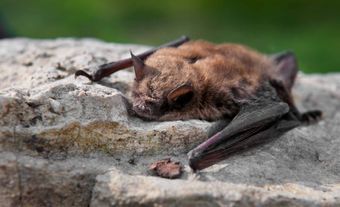Carnivora is an order of flesh-eating mammals, which includes terrestrial and aquatic families. Terrestrial carnivores include Canidae (dogs, wolves, jackals, foxes); Ursidae (bears, giant panda); Procyonidae (raccoons, lesser panda); Mustelidae (weasels, skunks, badgers, otters, martens, fishers, wolverine); Viverridae (civets); Herpestidae (mongooses); Hyaenidae (hyenas, aardwolf); and Felidae (cats).
Marine carnivores include Otariidae (eared seals); Phocidae (earless seals); and Odobenidae (walruses). In Canada, 8 families of Carnivora are represented with 25 genera and 38 species.
Diet
Only Felidae and the marine carnivores are almost exclusively meat-eaters; some members of each of the other families can eat other foods. Many are partly herbivorous; some have become, secondarily, wholly herbivorous. Carnivores arose from primitive Insectivora in the Palaeocene epoch (65-56.5 million years ago). Their great variety shows how well adapted carnivores are to the prey available on land and sea.
Solitary carnivores usually take prey smaller than themselves (eg, foxes eat mice); pack hunters take game as large as or larger than themselves (eg, wolves take caribou or moose). Some, such as bears and raccoons, are specialized omnivores, eating any plant or animal food; others (eg, mongooses) eat only insects. Giant pandas eat only bamboo shoots and polar bears eat mainly seals.
Distinguishing Features
A carnivore's tools are its teeth and claws. Cursorial (running) forms have nonretractile claws, eg, dogs and cheetahs; springing or stalking forms have retractile claws, eg, most cats. Carnivores depend on strong incisors, large, prominent canines and crushing or shearing cheek teeth; damaged teeth can bring death as surely as a broken leg. Female terrestrial carnivores also use their large canines to protect helpless young.
Reproduction
Terrestrial females usually bear their multiple young in dens or lairs, and rejoin their social group when the young are mobile. Seals bear their single young on land or ice. Some marine species group into a harem dominated by a breeding bull.
Hunting
Successful Carnivora have to outwit prey and, thus, are highly intelligent. Many cooperate in hunting, live in social groups, follow a leader and share resources to ensure the group's survival.
Other Carnivorous Animals
Not all carnivorous animals are Carnivora, since many animals eat other animals. Other carnivorous vertebrates include whales, marsupial native cats, lizards, crocodiles, salamanders, frogs and many fish.

 Share on Facebook
Share on Facebook Share on X
Share on X Share by Email
Share by Email Share on Google Classroom
Share on Google Classroom








